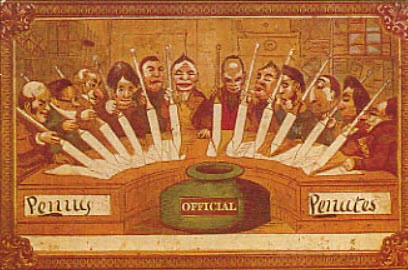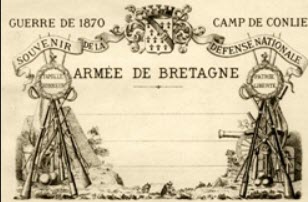The 2 Buds Deltiology
Deltiology = the study and collection of postcards
The term deltiology is derived from the Greek language. Deltion is the diminutive form of deltos, which means writing table or letter. The term deltiology was coined in the 20th century by Professor Randall Rhoades in Ashland, Ohio, USA.
Deltiologist = someone who studies and/or collects postcards
Deltiophile = a lover of postcards
Deltiography = the making of postcards
Collecting postcards
Globally, deltiology is the third largest collecting hobby, surpassed only by philately (postage stamp collecting) and numismatics (collecting currency, including coins, tokens, paper money, and related objects). In many countries, it is possible to join a deltiology club to find other collectors and participate in postcard shows and similar events. Postcards aren’t just collected by individuals; there are many historical and genealogical societies that collect postcards since they can provide important information about the past – including information that can not be obtained from books, maps and similar sources since it wasn’t considered important enough to preserve back then.
Can you make money collecting postcards?
There are a lot of postcards that are worth a lot of money but it is very hard to make money as a card collector. It is something that should be done for the love of the cards and not for profit. It is possible to make money trading postcards and selling postcard accessories but to do so you will need another mindset than a collector. You can be a collector as well but you need to focus on the business side first. Not the love of cards. You have to invest in things that are easy to sell, that is popular at the moment, not the cards you find most interesting. Not the cards you want in your collecting.
I recommend that you keep postcards as your hobby and use other methods to make money. I buy and sell binary options to make extra money to finance my hobby and other expenses. Binary options trading works well for me and I have been lucky enough to be able to make money in a trade where many others lose money. You need to find a type of trading or side work that works for you and allow you to make money to finance your hobby.
Themes
Many deltiologists have one or more special fields of interest. Here are a few examples of different types of postcards:
- Postcards from a specific time period
- Postcards made by a specific artist
- Postcards produced by a specific company
- Postcards depicting scenes from a certain neighborhood, town, city, country or other geographical regions
- Transportation, or specific modes of transportation (e.g. trains only or airplanes only)
- Religious postcards
- Patriotic postcards
- Political postcards
- Humorous postcards
- Risque postcards
- Casino postcards
Sometimes postcards are included in other collections; a person collecting teacups might, for instance, decide to include postcards depicting teacups in their collection.
Early history of postcards
Cards with messages have been used even before there was a national postal service available, but they are beyond the scope of this article. Instead, we will look at postcards (with picture or blank) that were intended to be sent through regular mail, at a letter rate or cheaper.
Theodore Hook’s hand-painted postcard
We will start with a bit of information about the oldest known picture postcard that’s acknowledged among postcard collectors as a postcard.
 This postcard, which was hand-painted, was sent to Theodore Hook (1788-1841) from Fulham in London in 1840. The postcard is believed to have been created and posted by Hook himself as a practical joke on the postal service because Hook was a known jokester and the image on the postcard is a caricature of workers in the post office. 1840 was the year when the Penny Black, the world’s first adhesive postage stamp, was issued, and a Penny Black was used to send the card to Hook. In 2002, Hook’s postcard was sold for a record-breaking £31,750.
This postcard, which was hand-painted, was sent to Theodore Hook (1788-1841) from Fulham in London in 1840. The postcard is believed to have been created and posted by Hook himself as a practical joke on the postal service because Hook was a known jokester and the image on the postcard is a caricature of workers in the post office. 1840 was the year when the Penny Black, the world’s first adhesive postage stamp, was issued, and a Penny Black was used to send the card to Hook. In 2002, Hook’s postcard was sold for a record-breaking £31,750.
Before the advent of postage stamps, it was normal for recipients in Great Britain to pay postage on delivery, with the cost depending on the number of sheets and distance traveled. With the Penny Black, the sender paid the postage in advance and could send up to 1/2 ounce in Great Britain for the flat rate of one penny regardless of distance. Of course, this invention would be of great importance for promoting the practice of sending postcards.
Early postcards in the United States
The first postcard sent by regular mail, at letter rate, in the United States, was a card postmarked in December 1848 containing printed advertising.
In the 1860s, postal cards were used by William Henry Jackson – an artist and photographer painting Civil War battlefields – to write to his family.
In 1861, the first commercially produced postcards in the United States were created. Their creator was the Philadelphia based printer John P. Charlton. Charlton patented the postal card and then sold the rights to his friend Hymen Lipman. Lipman began printing and selling standardized postcards that didn’t have any picture but did have a decorative border.
The postcard format with a picture on the front and a divided back (one field for the message and another field for the address) wasn’t in use in the United States until 1907, despite being popular in other countries much earlier than this. Read more here.
Postcards with an integrated postage stamp
In 1870, the British Post Office began issuing (no picture) postcards where the stamp was printed as a part of the design. The cost of postage was included in the price of the card, so the sender didn’t need to buy a separate stamp and attach to the card before mailing it. Initially, these postcards came in two sizes, but the larger size was withdrawn pretty soon since it turned out to be more difficult to handle than the smaller one.
The first printed picture postcard
The first known printed picture postcards (i.e postcard with an image on one side) was created at Camp Conlie, France, in 1870. If they really truly count as postcards is debatable because there was no designated area for stamps and there is no evidence that they were ever posted without envelopes.
Be that as it may, they were created by Léon Besnardeau (1829-1914) in the Conline training camp for soldiers during the Franco-Prussian war, and the cards had a lithographed design printed on them. Here is a picture:
The text means “War of 1870. Camp de Conline. Souvenir of the National Defence. Army of Brittany.”